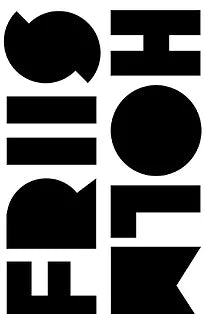The Chocolate Factory

In May 2015, we opened the doors to our very own chocolate factory in Denmark! The factory is now located in Herslev, just outside of Roskilde, and it is right next to Herslev Bryghus (an organic farm brewery). We have a shop at the factory, and we do pre-booked tours for groups. So please get in touch if you would like to come and visit. Shop opening hours are at the bottom of this page.
There are several factors that make our chocolate amongst the world's best. Here, you can read about the full process, from bean to bar.
|
Bean selection and genetics To get superior chocolate - first you need consistency. It is important to have a complete control of which beans, genetics, that go into the chocolate, but just as important the post harvest protocols of fermentation and drying. We work directly with many farmers, cooperatives and bean projects to lift the quality of the cacao grown. There are a thousands of different cacao genetics. The old tired story about Criollo, Trinitario and Forastero should be put to rest - and Cacao should be treated with the same respect as grapes, apples etc etc. There is a huge difference in looks, smell and taste between the different varieties. This makes the bean selection and knowledge of genetics the first important step, in a long string of important choices, when trying to make some of the world's best chocolate. Thinking this way, we can set the state of quality from the very beginning of the process. |
 |

|
Fermentation: We harvest the cacao fruits when perfectly ripe. The cacao fruits are cracked open, and the beans inside, with fruit meat/pulp around, is taken out and put into fermentation boxes. The fermentation process takes several days, and include; the sugars in the pulp creating ethanol, an anaerobic lactic fermentation created inside the beans first, and then, when mixed also an acetic fermentation as part of the process. We ferment until the beans reach the taste profile we would like to achieve, usually 5-6 days. The cacao beans are then dried, also an important flavor step, then sorted and packed in sacks, and sent to our factory in Herslev, Denmark. |
|
Roasting: We roast each bean variety to the preferred taste profile. After roasting, the beans are crushed and winnowed, removing the paper like shell around the cacao part of the beans. The beans are now called "cacao nibs”, which we can now grind in to chocolate. |
 |

|
Grinding and mixing: |
|
Conching: Conching is an arcane and scientific process, where we work to improve texture and mouthfeel and make sure that the chocolate gets the final balanced taste. We work with a more than 100 year old longitudinal Conche machine. 6.000 kg of old iron… The first Conche was invented and used in the late 1870s by Lindt. No one has made a better process for this part of chocolate making since. It has been made faster and more economical - but never better. The chocolate is agitated and emulsified for the specified amount of time - and is ready when the chocolate is perfect on the tongue. Tasting is always the key to getting the best possible quality. |
|
 |
Tempering and moulding:
|
|
Filled chocolate and 'Flødeboller': At the heart of our factory, we have a special room where we make all the filled chocolates and 'flødeboller'. It is essentially a big kitchen, where we can taste our way through different kinds of flavors and ingredients before they are assembled into fillings, enrobed with chocolate, or poured in to chocolate shells. Creating our flavour filled bon- bon chocolates. This is handmade specialties at its finest. You will be surprised how handheld this is for us. But we believe this is key to maintaining the best possbile quality. We do spend a lot of time inventing new flavors and pushing the boundaries to how much flavour we can pack in to a tiny filled chocolate. We work closely with other local Danish food producers, experts within their fields, to get amazing raw materials enabling amazing flavors. |

|

|
Packaging
|

